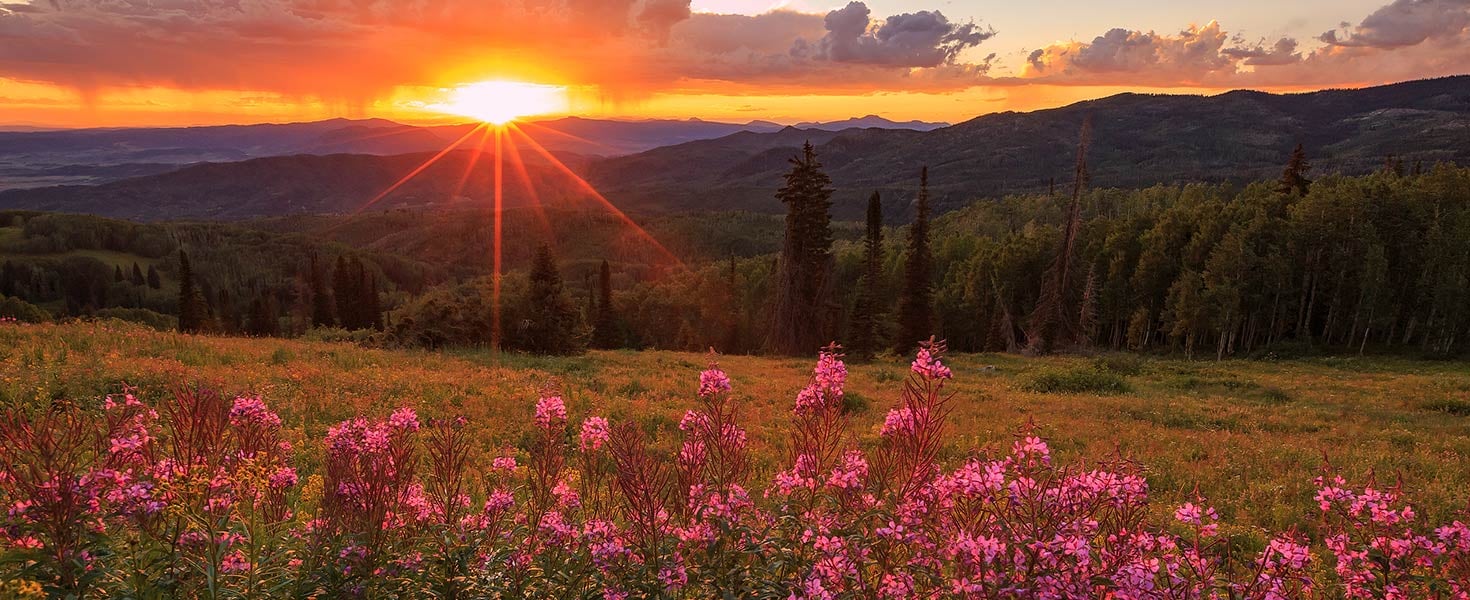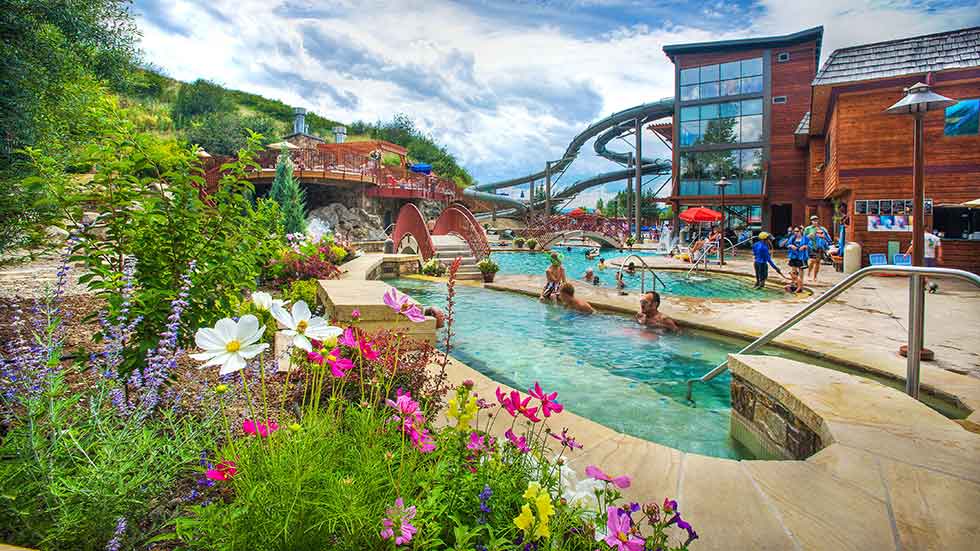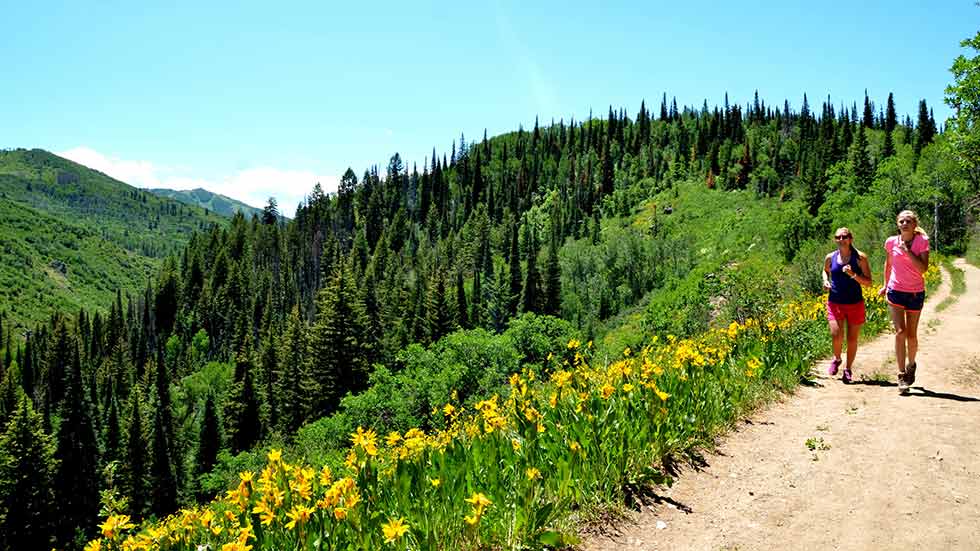The Road to Rejuvenation
Wellness comes naturally for the Colorado community of Steamboat Springs

If you’ve heard of Steamboat Springs, chances are it was through its reputation as a famous Rocky Mountain ski town or mountain-biking destination, which is understandable since Ski Country USA and Bike Town USA are its official registered trademarks. Surrounded by a 160,000- acre wilderness area and having produced a record 88 winter Olympians, this remote northern Colorado town, 156 miles from Denver, is an outdoor haven few destinations can match.
Fitness, health and wellness seem to come naturally here, ingrained in the community fabric of 12,000 year-round residents who hike, bike, ski and place a priority on an active lifestyle. Seemingly, it’s contagious, seeing as how visitors clamor to enjoy Steamboat’s diverse pursuits. Opportunities for physical fitness and outdoor sports are virtually everywhere. Relaxation and stress relief are as easy as walks in the nearby woods to pristine waterfalls. Facilities for meditation, yoga, spiritual awareness, and body and detox treatments have popped up alongside bike, ski and fly-fishing shops.

Image courtesy of Old Town Hot Springs
“Wellness” could very well be another Steamboat trademark in the making. While wellness travel is all the rage now—a $3.7 trillion tourism segment that’s posting annual double-digit growth—it’s actually old hat in these parts. Colorado has been a wellness magnet since the 1800s. Historians estimate that roughly one-third of Colorado’s early settlers moved to the state for health reasons, seeking fresh dry air, sunshine, spectacular natural surroundings and abundant natural mineral hot springs. Many of the 30 hot-spring zones in the state were developed and promoted for their “healing waters” that could offer relief from pneumonia, tuberculosis, arthritis and other afflictions.
Steamboat’s hot springs played a big part in putting this once-off-the-beaten-path place on the map, beginning with the Ute Indians who visited the 150 area “medicine springs” for therapeutic rejuvenation and spiritual healing. In 1875, the first European settlers began arriving, and after hearing one of the spring’s gurgling “chug, chug” sound, which reminded them of a riverboat, the name Steamboat Springs was born.

Image courtesy of Old Town Hot Springs
Today, Steamboat’s pride and joy is its Old Town Hot Springs, where locals and visitors soak, relax and rejuvenate in the yearround improved natural hot-springs pools. Eight outdoor pools fed by natural hot springs with water temperatures ranging from 80 to 104 degrees Fahrenheit offer decidedly different experiences, from lap and waterslide pools to waterfall and small soaking pools. Even with these modern-day improvements, the therapeutic chemistry remains the same. Minerals, including boron, lithium, calcium, magnesium, silica and others, are proven to soothe and rejuvenate soakers. After a limbering soak, visitors can treat themselves to the best massage in town by nationally certified therapists specializing in Swedish, sports, acupressure and integrative massages, just to name a few.
A 15-minute drive from town is another soaking experience visitors shouldn’t miss: Strawberry Park Hot Springs. Nestled in a mountain wilderness setting, this shady oasis has an enchanting series of natural-looking rock-walled pools with staggered temperatures up to 112 degrees Fahrenheit, all laced together by stone walkways coursing through the forest. More fitness-minded visitors often arrive on snowshoes, skis or bikes or by hiking the three-mile Mad Creek Trail accessed by County Road 129, making soaks even more rewarding. Private massages or a watsu therapy treatment, a gentle form of massage therapy in hot water, can be booked beforehand, along with overnight stays in tents or rustic huts that complement the wilderness experience.
Nature defines Steamboat’s character, so it probably comes as no surprise that outdoor activities are never far away. Among them is the popular pastime of hiking any of the 55 miles of trails emanating from town. The most prevalent might be Emerald Mountain’s Quarry Trail, a mild lungbuster— by Rocky Mountain standards—climbing just under 1,000 feet from the town’s 6,732-foot elevation. If you’re unaccustomed to the altitude, take a breather on this four-mile trek to enjoy panoramic views of the broad Yampa Valley and the magnificent stands of stately aspen trees for which Steamboat is known.
As sustenance goes, take your pick of healthy organic restaurants and cafés that locals go nuts for, such as Freshies, Creekside Café and Winona’s—all of which serve up delicious, healthful, satisfying fare that your cardiologist would approve of. A new player in Steamboat that’s getting high reviews on social media is Cloverdale Farm & Restaurant. Housed in a charming old restored home and adhering to a farm-to-table ethos, this chef-driven establishment locally sources nearly 100 percent of all its ingredients, from organic lamb and beef to the eggs, herbs and vegetables grown on its own farm. Menu items such as parsnip panna cotta with molasses, rutabaga with smoked trout, ranch lamb with nightshade, and wild currant-pumpkin gingerbread attest to Cloverdale’s culinary creativity. Absent of chemicals, preservatives or flavored concentrates, the quality is what nature intended.
For many wellness travelers, their sojourn wouldn’t be complete without the healing arts. In Steamboat, that’s where Rakta Hot Yoga and Wellness Studio comes in. Harmonizing the development of the mind, body and spirit is the fundamental philosophy here, and through its hot-yoga sessions in rooms adjusted to body temperature, workouts are nothing short of cleansing experiences. The sauna-like air temperature makes exercise challenging; profuse perspiration is the goal. But the payoff is improved circulation, immune function, skin tone, relaxation and detoxification that yoga students swear by. The studio gladly accepts visitors stopping by on a whim.

Another wellness establishment that recently opened its doors here (and is the talk of the town) is Neptune Healing Float Spa. A float spa? Go back to the 1950s, when neuroscientist and medical practitioner John C. Lilly studied the potential therapeutic effects on people as they floated in lightless, soundproof tanks filled with salt water at skin temperature. In those days, they were called sensory-deprivation or isolation tanks. Research is ongoing concerning the effects these treatments have on post-traumatic stress disorder, anxiety and stress. Float tanks are often used by people seeking treatment for conditions such as muscle tension, chronic pain, hypertension, rheumatoid arthritis and more.
There might not be a better stress reliever than floating in Neptune’s modern tanks, which look like futuristic clamshell pods that could be used for long-term space travel. Each tank is filled with water in which 900 pounds of Epsom salts have been dissolved, making the people in them float like corks. The weightless sensation and total lack of external stimuli can be described as liberating and luxurious. In fact, some researchers say the experience enables users to drift into the elusive hypnotic Theta state of ultimate relaxation.
Relaxation, rejuvenation and recreation—Steamboat Springs is its own state of mind, a destination where pursuing health and wellness is as fun as it gets.
